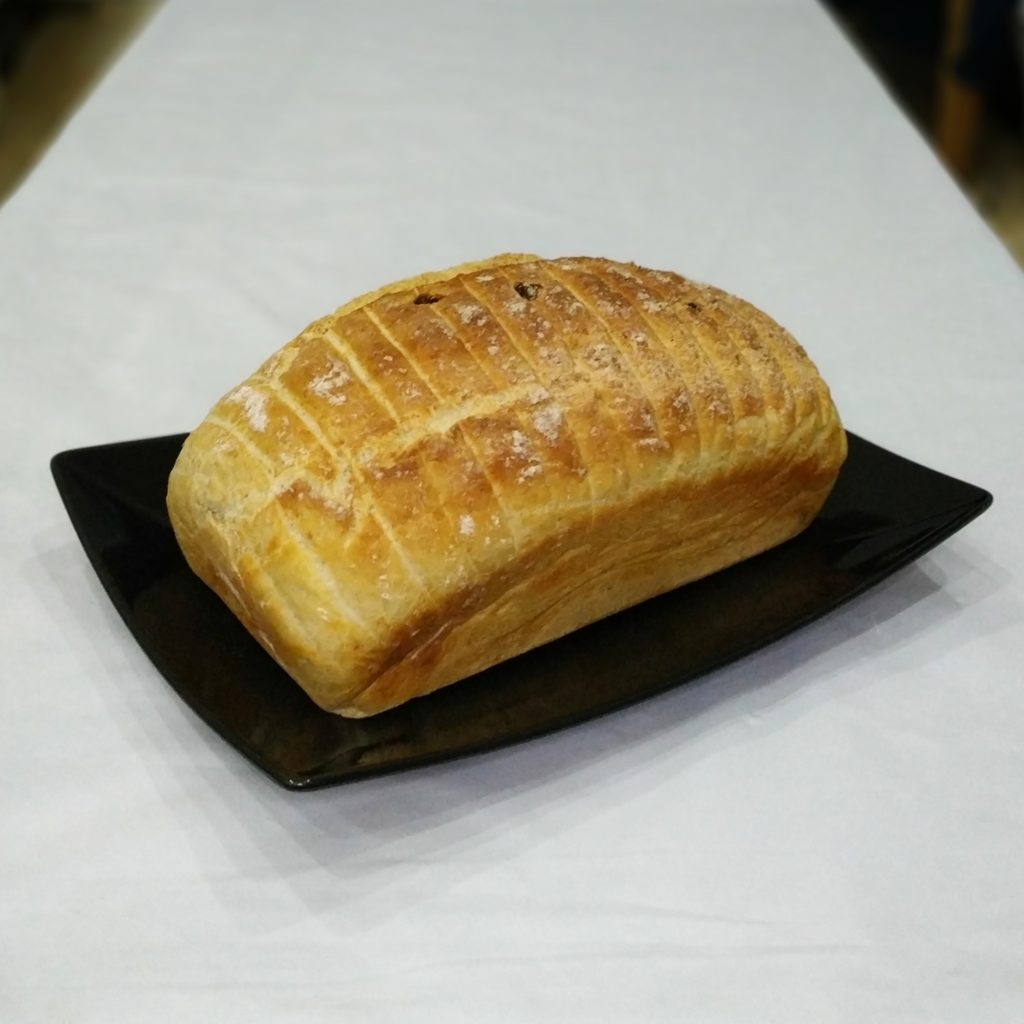
Sourdough Starter
Your starter is a natural yeast that brings lift to the bread. It’s not as strong as typical active yeast bought in blocks or packets, but it’s an easy, cheap and zero-waste way of making bread.
How to Make a Sourdough Starter
- Find a large glass jar and keep the lid loose to let gas out
- Add 1tbsp flour and enough water to make a thin paste
- Leave outside at room temperature for a day
- Add 1/3 or 1/2 extra flour and water and mix in
- Repeat steps 3-4 until you have a bubbly mixture that smells of bread/yeast. Usually takes a week or so.
This is away of making a starter with minimal waste. Alternatively, ask a friend for some of theirs, then feed it when you get home.
–
Feeding
After established, either feed every day (if you bake regularly) or pop in the fridge and feed once a week by adding 1/3 or 1/2 to the amount you have already.
I tend to bake a loaf before it builds up too much, in order to avoid food waste from discarding 1/3 before feeding.
–
Flour Types
Personally, I feed my starter with a mix of wholemeal and rye flour when feeding. When I want to bake a loaf, I feed it with equal parts of wholemeal, rye and plain flour. Too much of the first two makes a dense, sticky loaf, so the plain flour pads it out.
Try to only use organic flour when feeding, as pesticides can have a negative impact on the starter.
It’s good to use a variety of flours for extra nutrients and encourage diversity in your gut flora after eating. To learn more, check out Karen O’Donghue’s episode on The Doctor’s Kitchen Podcast.
–
Fermentation Times
The warmer the environment, the faster it’ll ferment. On a typical Spring day, it can take anywhere between 4-7 hours to ferment, depending on whether it’s in direct or indirect sunlight, near a window on a breezy day etc.
During Winter, I tend to wrap the jar in a blanket with a hot water bottle underneath. It normally takes around 2 hours for a 350-400g mixture to ferment using that method.
–
How to Know When Your Sourdough Starter is Ready
Get a glass of water and let some starter drop into it, using a spoon. If the starter floats, it’s ready to use (because there’s enough air in it). If it sinks, it either needs more time or is overdone.
This is called the Drop Test. It isn’t fool-proof, but it’s worked out for me so far.
Sourdough Bread Recipe
This is a modified version of a BBC recipe, which I’ve tweaked over time to suit my taste and save on resources.
–
Ingredients
- 10g salt
- 500g strong bread flour
- 300g sourdough starter
- 20g olive oil
- water to loosen
–
Equipment
- Large bowl
- Knife/spoon to stir
- Covering for the bowl (I use a clean shower cap, as it can be reused)
- Spatula (easier to remove dough from bowl)
- Bread tin/basket
–
Instructions
- Weigh the dry ingredients, then make a well in the middle.
- Pour in sourdough starter and oil.
- Using a spoon or butter knife, mix from the centre outwards, then add water when needed until it forms a dough.
- Knead on a flat, clean surface until smooth.
- Line the bowl with olive oil, place the dough inside then cover.
- Leave to prove in a warm place for 4-6 hours.
- Preheat the oven to 200-220°C (fan-assisted).
- Oil the bread tin (or flour a bread basket) and place inside. Dust with flour if you want to.
- Bake for 35mins, then leave to cool on a cooling rack.
–

Tips
- Throw in 3 cubes of ice around the bread when placing it in the oven. The steam will help form a crust.
- Add 10g sugar if you want a dark, thick crust. I skip this to make a healthier loaf.
- Adding olive oil to the dough helps preserve the bread.
- Carve light grooves into the loaf before baking, so it’s easier to slice afterwards. Trust me, the crust can get pretty tough after a couple of days – you’ll need a sharp knife and a lot of caution! Adding grooves makes things so much easier.
- If adding seeds, either knead into the mix or apply a glaze to the dough before sprinkling them on top – otherwise they’ll fall off after baking.
- It’s totally okay to cheat and use active yeast to the bread mix if you’ve over-proved your starter. It’s less wasteful and time-consuming than depleting and re-feeding it.
- The runnier the starter, the more bubbly the loaf.
- Add honey or sugar to the starter when feeding if you wanna speed up the process.
- Sourdough is very floppy, so if you don’t use a tin or mould, it’ll be round and flat. Great for a rustic look, but awkward when using a toaster.
